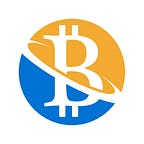Opinion: Why is the investment value of UNI undervalued?
In a recent post, Jeff Dorman, chief investment officer of Arca, a leading investment management firm, said that UNISWAP revenue would be passed on to token holders, and Uni holders would receive a substantial revenue stream.
Not only does Jeff think from the perspective of a traditional investor, but he also compares DeFi’s other investments professionally and illustrates several of his investment ideas for UNI. Although Jeff shared his investment views on uni, the truth is also applicable to DFI and the entire cryptocurrency ecosystem. This is reason to write this article.
Before we talk about uniswap, let’s take a look at Ethereum.
For now, Ethereum is the undisputed market leader. Since its launch in 2013, ethereum has attracted the attention of traders and analysts worldwide because its ecosystem remains healthy and healthy and dynamic. Both the smart contract platform and the blockchain public chain technology, Ethereum is in a leading position.
We all know that ethereum carries a number of well-known decentralized applications, building a thriving ecosystem. Some of giant dapp are also born on Ethereum, such as the DeFi.
DeFi’s popularity has spawned a number of projects. For example, YFI, the governance proxy for the well known ‘yearn.finance’ project, was only around $3 when Balancer was first opened for trading, rising to more than $4,000 in less than a week. The peak price even topped $30,000, well above bitcoin’s all time high. Investors witness the miracle about a 10,000-fold jump in 58 days.
However, while the DeFi hype has boosted the network value of Ethereum, it has had no positive impact on the price of ETH. In other words, the explosion of these Tokens didn’t trigger the ETH explosion. Historically, June — September has been DeFi’s hottest month, with ETH trading in the low $400, unprompted by DeFi hype. As you can see, Ethereum, despite carrying such a huge ecosystem, it has not really captured the value of its application in ecosystem.
However, some institutional investors are still buying ETH, oblivious to current market volatility. This is because Ethereum is a clear market leader, with strong growth and usage, although the ETH token holders have yet to capture these values.
For Uni, it’s the same thing.
According to the DuneAnalytics report, Uniswap is a clear leader among many DEX, just as Ethereum is a leader among smart contract platforms. In the DEX world, no protocol is even close to UniSwap.
We know that the initial total number of UNI Tokens is one billion. Of these, 600 million were allocated to communities through public airdrops and ongoing mining programmes. While 400 million were allocated to teams, early equity investors, advisers and others for a four-year unlock period.
Of the 60% of UNI Tokens distributed to the community, 150 million were distributed directly to users who had used UniSwap before 1 September 2020 through public airdrops. There are 430 million “Governance Funds” allocated through mining. The mining plan will lasted for four years, with the rate of 40% , 30% , 20% and 10% being gradually reduced. In the first year, 5 million UNI token of the total mining releases will be excavated and released to the market in two months as the first batch. That is to say, around November 18, UNI’s the first liquidity mining will come to an end.
It should be noted that the total amount of UNI is not capped, after the four-year issue period will continue to be issued at a fixed annual inflation rate of 2%. In addition, a “fee switch” will be initiated 180 days after the start of governance, on February 26, 2021. The fee switch means that 0.05% of the 0.3% fee is no longer given to LP but shared to all UNI holders to support the UNI’s value.
For ethereum, the future of EIP-1559 and ETH 2.0 is uncertain, but the UNI’s “Fee switch” is almost certain. After the fee switched, the UNI will change from a governance token to a “pass-through” token.
Based on an average daily transaction volume of US $360 million for uniswap and a 0.30% fee, the annual fee income generated by uniswap is expected to be US $380 million. After the fee switch, holders of UNI Tokens will receive an annual yield of $66m, with a 13% dividend. By contrast, the forward P/E ratio of the S & P 500 index is 25 times, and the dividend yield is only 1.7%. It’s enough to show who’s more profitable.
Jeff argues that any measure of Defi and digital assets in general has a higher multiple than an overextended stock market during a recession. Once market participants start using the same valuation criteria for UNI and ETH, UNI will be considered the cheapest of all digital assets in DeFi field.
Jeff also uses Facebook’s history as an example. FACEBOOK was priced at $38 A share when it went public in 2012, but soon dropped to $20 when everyone was afraid it was overpriced and missed out. At the time of writing, Facebook’s stock price had reached $277. This is because Facebook has always been in a leading position. Its share price falls only for a short time. Its development potential is great, which will eventually be reflected in the market value.
The same goes for Uni: “Smart Investors don’t bet against leaders.” As long as UniSwap remains at the top of all DEX, the UNI will eventually capture reasonable value, rather than stay in its current slump. Similarly, smart investors should learn to draw inferences from one instance. No matter what field they are in, they should seize the “leader” when the market price is low.
